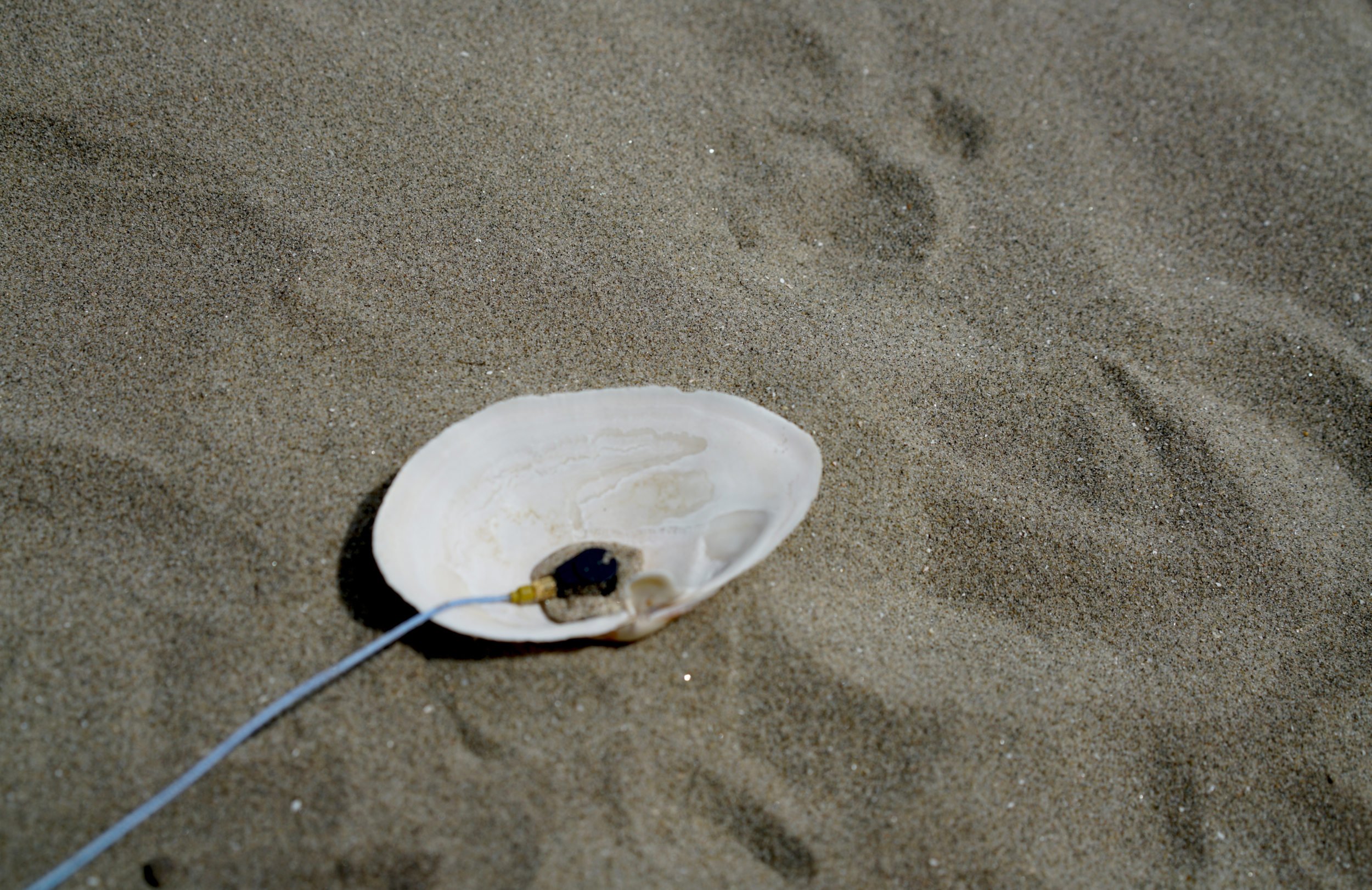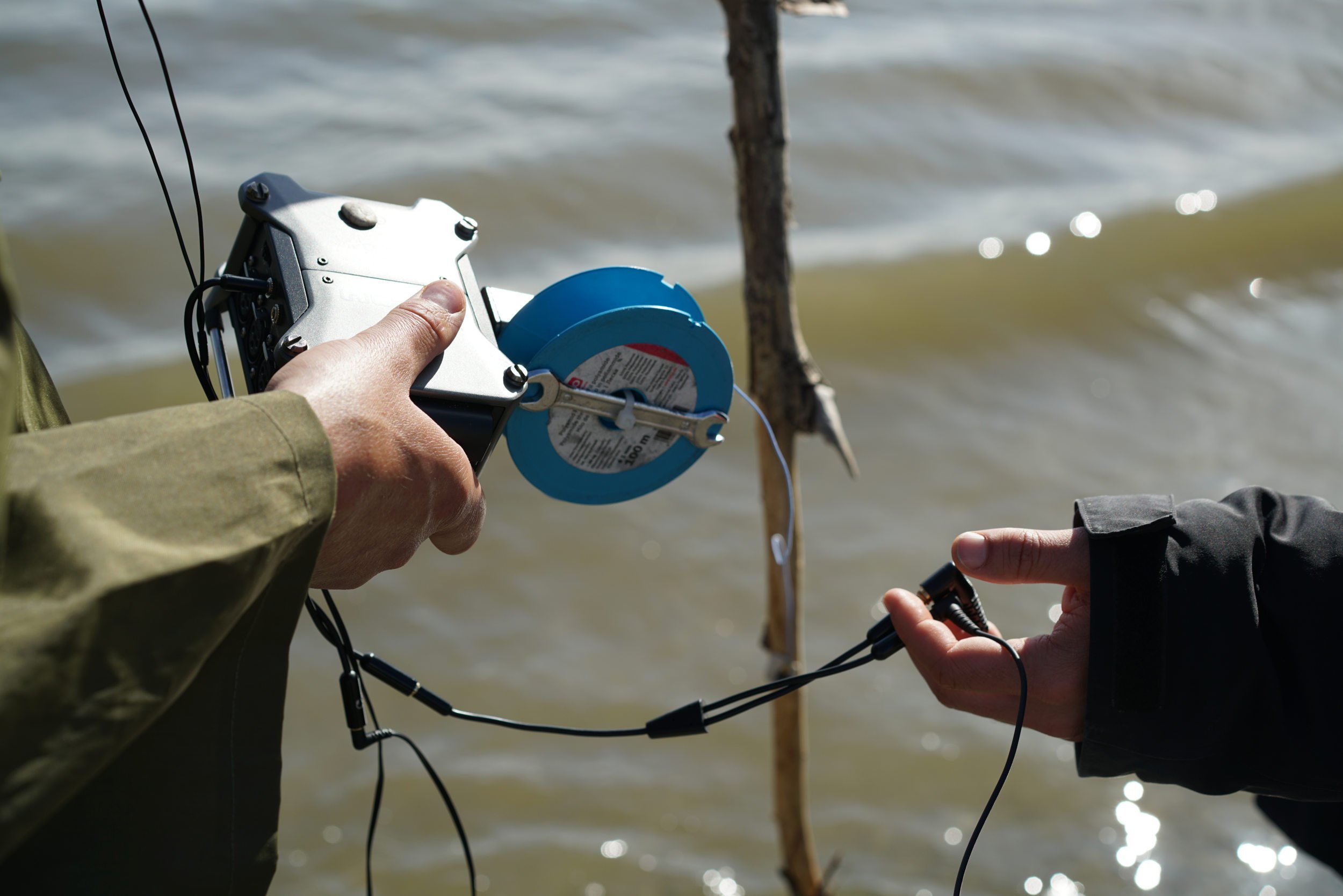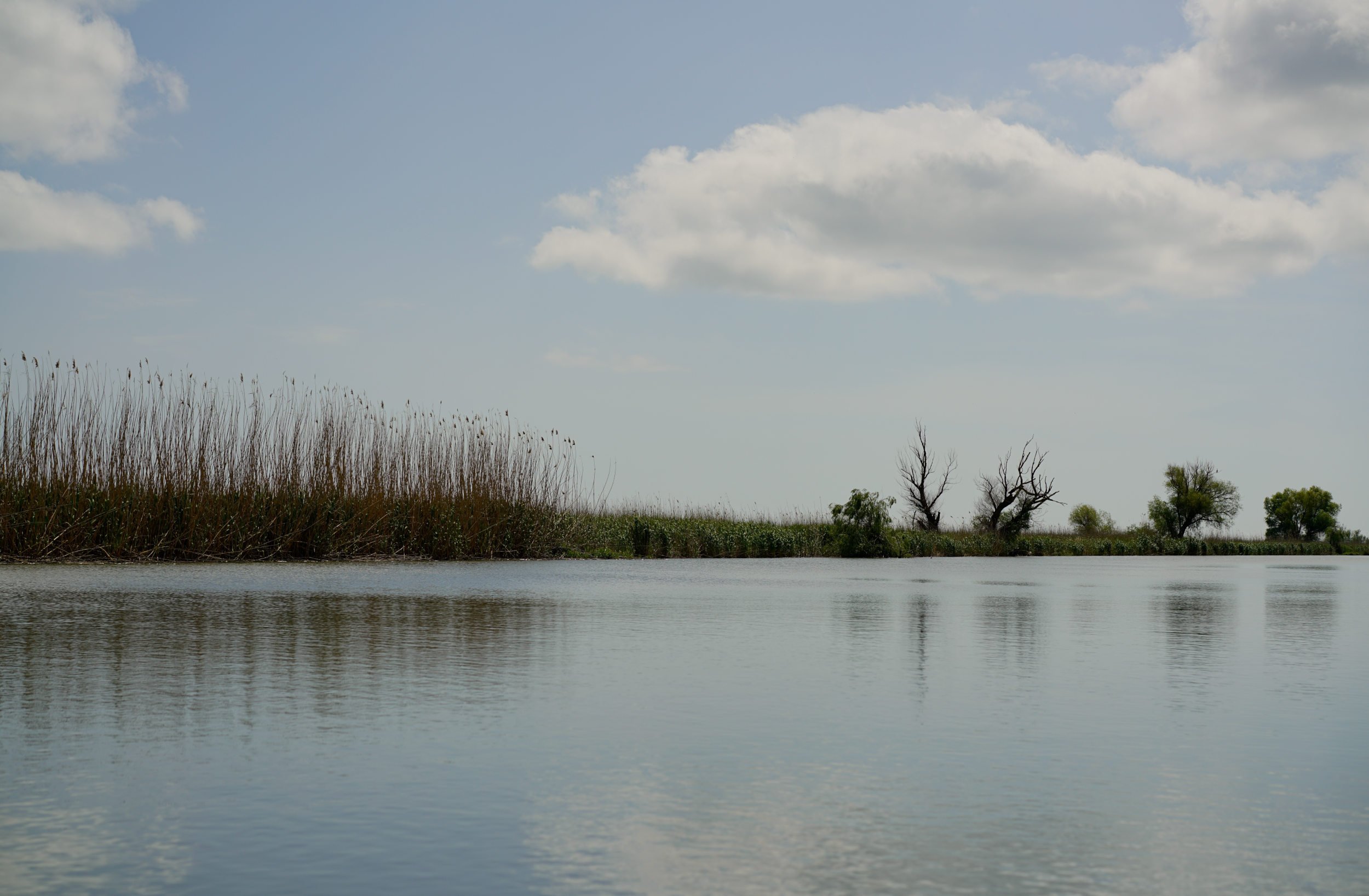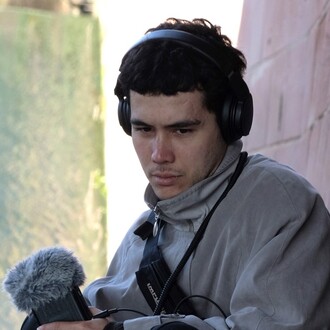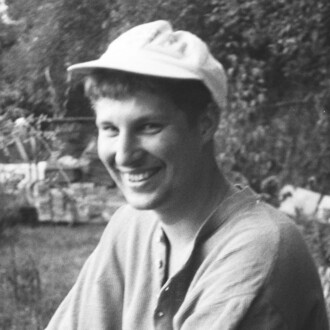Shifting and shaking up amphibious zones, sandy bits of past lands flow through the Danube waters, forming deltaic riverbeds and reemerging as dunes on the shores of the Black Sea. Our bodies negotiate with the water’s edge, soles meet soaked grounds and stormy springtime in Romania. Flocks return, forests flood, fish multiply, and the insects hum in the reeds. Our own guts are ingested into the swampy metabolism of the Delta, and we settle into new rhythms.
The semi-submerged worlds of the Danube Delta form a vibrant arena where the collective pulse is composed of trembling matter. As we tune in to the Delta vibroscape with our adapted contact accelerometer, a tiny tool sensitive to vibrating materials, our own senses grow slightly more amphibious. Here at the margins – of hybrid human perception, of the terrestrial and the aquatic, of human bodies and Delta bodies folding into each other – a slippery space opens up where worlds collide: a contact zone.
Echoing Mary Louise Pratt and Astrida Neimanis, we ask: “How do we hold open the contact zones to be something other than a leveling machine?”1) How are we employing fieldwork and recording as processes nurturing an approach of ‘making with’ instead of returning to a colonialist notion of fieldwork as ‘making accessible’? How can the artworks, which translate and amplify the Delta vibroscape and its submerged histories, become sites of intimacy with worlds that remain “never fully known, impossible to assimilate?”2)
We turn to the vibratory linkages and the waterways of the Delta itself. Vibration, considered a “shadow phenomena” as Nina Sun Eidsheim writes, “does not exist prior to a specific material realization.”3) Becoming sensitive to the materials that vibrate is an act of gaining contact. In the watery zones of the Delta, we affix our contact accelerometer – a device reclaimed from industrial vibration measuring and military surveillance – to various materialities. The process lets us zoom into the vibration of metal poles on the shores, sandy shells touched by the wind, and reeds trembling with insect processions. By means of sonic translation via our recording device, we can perceive these tremors through active listening. Entangled in three sets of headphones split from our device, we learn to collectively shuffle and find stillness together.
Our interlinked and embodied sensing practice aids in our awareness of the sonic burrows enmeshing matter with other scales. The soaked Delta materials exist in spatio-temporal relations and rhythms that are beyond human perception. Intermaterial vibration connects the Delta bodies but also figures transductions, “giving way to exchanges across material and affective states.”4) With the Danube transporting tonnes of sediment each year from all over Europe – reforming the riverbeds and deltaic dunes – the Delta takes shape through an ongoing remixing, recomposing both space and time.
As Marcus Boon outlines in his book The Politics of Vibration: “Vibrations happen in a field – they constitute a field”5) or a space. Boon unfolds music as an emergent property within this field, perhaps a more relatable point of human-embodied access to vibrant sensations. Shifting spaces to a field outside of music, Boon shares that there’s much to consider about how “vibration itself has been understood as a medium or material, central to various forms of life, practices, ‘lieux communs’ [common place] (Glissant).”6)
At the margins of the audible, vibration here in the Danube Delta is a force that, beyond creating linkages, shakes up and activates its submerged histories and granular memories. Getting in touch with the dynamic imprints of riverscape memory (Brierley, 2010; and dialogue with Lantto Klein)7) is a gesture of tracing intertwined archives in the substratum which become animated by the shadowy pulse of vibration. Likewise, this soaked space represents a compounding of places similar to Édouard Glissant’s common-place, ”8) as signaled by Boon.
Sensing the vibrant commons of the Danube Delta is an attunement to the local vibroscape. From the science of ecotremology, or the study of trembling ecologies, a vibroscape is the sum of all emanating vibrations in the environment.9) Ambient Tremology emerges from our ongoing practice and field sessions on glimpsing the Delta’s porous boundaries by tapping into amphibious tremors. Our installation at Display Gallery transmits composed recordings through a wall piece, where one may come in contact with the structure to feel the vibrant records of the Delta. Within the space, three sculptural fragments reverberate activated amphibious matter from the Delta vibroscape. Glass etchings trace geologic shifts, trembling reeds embody the semi-submerged realm, and the sculpted porous concrete block echoes the local post-natural histories. Instead of trying to uncover the material assemblages of the Danube Delta, we rework our relation to them by opening up spaces for contact with the rhythms and trembling constellations of waterways in transition and more-than-human transmission.
---
Notes
1) Astrida Neimanis, 2020, The river ends as the Ocean, p. 23
2) Ibid.
3) Nina Sun Eidsheim, 2015, Sensing Sound: Singing & Listening as Vibrational Practice, Duke University Press, p. 161.
4) Brandon LaBelle, January 2021, Acoustic spatiality, Infrasonica, https://infrasonica.org/en/sonic-realism-wave-3/nicole.
5) Marcus Boon, 2022, The Politics of Vibration: Music as a Cosmopolitical Practice, Duke University Press, p. 7.
6) Boon, The Politics of Vibration: Music as a Cosmopolitical Practice, p. 27.
7) After a conversation with Mirjami Lantto Klein and reflection on: Gary John Brierley, 2010, Landscape memory: the imprint of the past on contemporary landscape forms and processes. Area Vol. 42 No. 1, p. 76–85.
8) Boon, The Politics of Vibration: Music as a Cosmopolitical Practice, p. 27.
9) Rok Šturm, Juan José López Díez, Jernej Polajnar, Jérôme Sueur, and Meta Virant-Doberlet, 2022, Is It Time for Ecotremology? Front. Ecol. Evol. Vol. 10.
